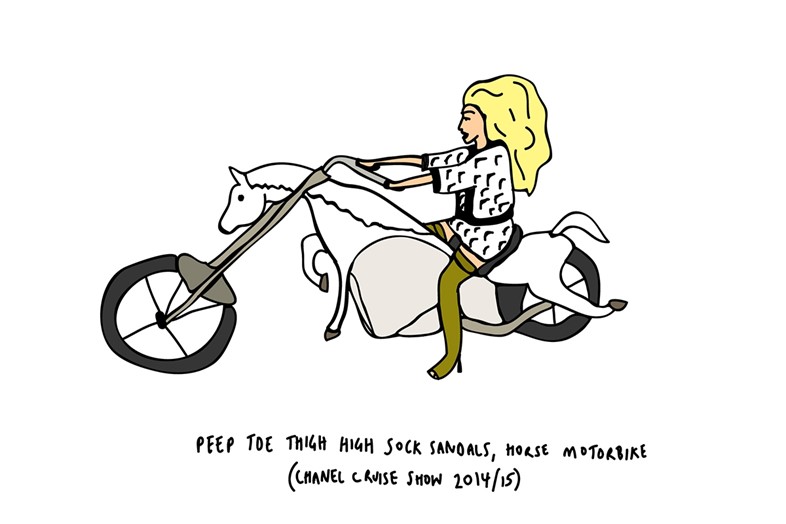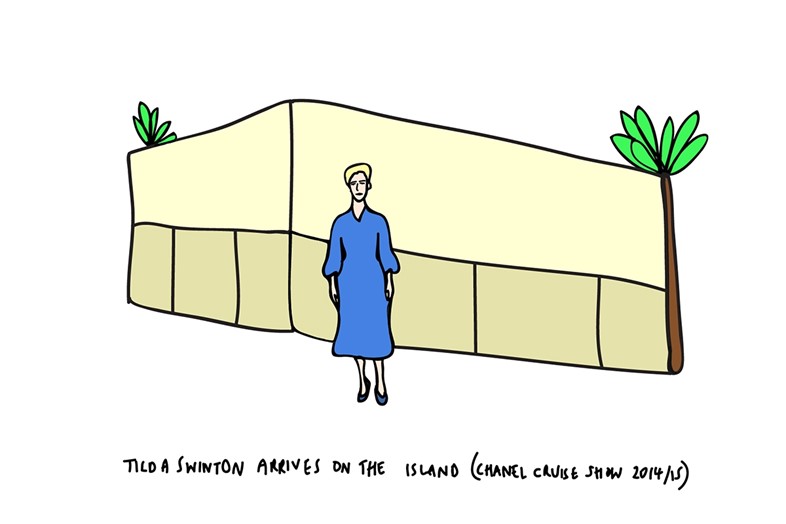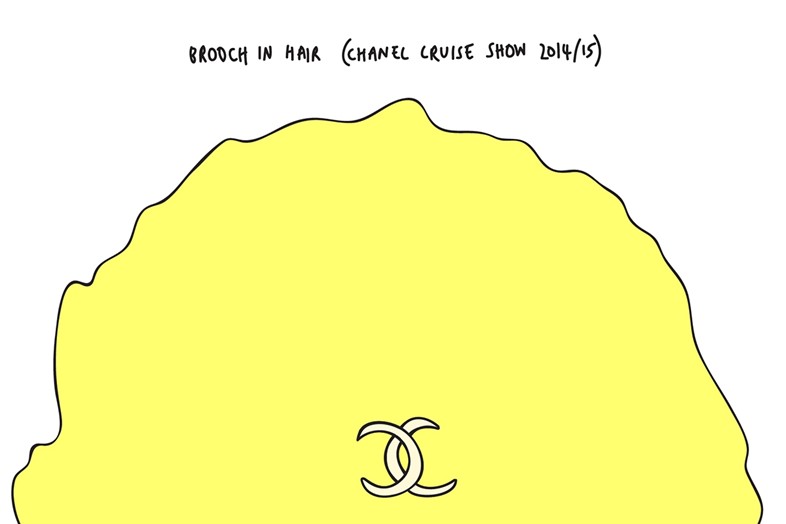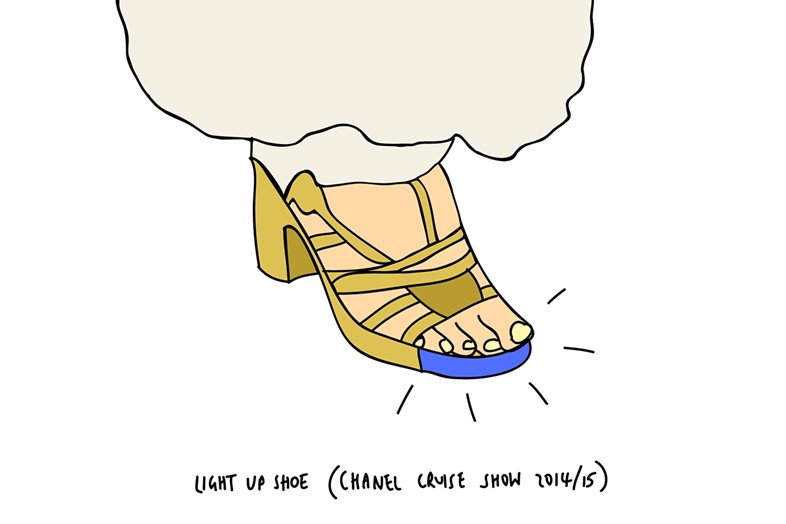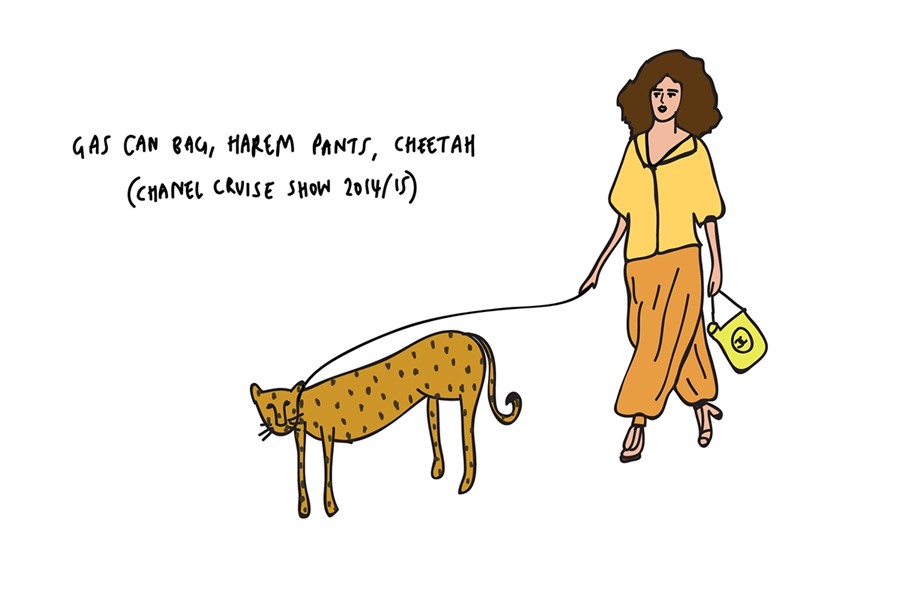AnOther views the exquisite Chanel resort collection through the irreverent eye of illustrator Olivia Domingos
On May 13, at dusk, more than one thousand guests to the latest Chanel Resort show gathered in a deserted beach in Dubai, not too sure what to expect. They were subsequently transported by Abras (traditional Arabic boats) from the shore to an artificial island made out of white sand from the Arabian Desert which, during the past 2 months, had gone from being entirely barren to hosting an abundance of palm trees, henna plants, Bedouin tents and a spacious beige building covered in what looked like arabesque drawings – in fact, upon closer inspection, Chanel’s iconic double Cs.
"No stranger to Dubai’s fantastic history, Karl Lagerfeld revelled in making sartorial winks to the traditions of the Emirates"
Strangely mesmerising and slightly unreal, the setting was nothing but a mirror of Dubai, a city that went from having 40,000 inhabitants in the 60s (before oil was found in 1966) to over 2 million nowadays. What was a small town filled with traditional constructions morphed into a futuristic megatropolis boasting the tallest building on Earth, the Burj Khalifa. In less than 4 decades, desert sand has given way to ultra modern highways lined by skyscrapers in emerald green, sapphire blue and ruby red tones, and an empty coastline has been revamped to accommodate herculean projects such as the Palm Jumeirah (a man-made palm-shaped peninsula filled with luxury apartment buildings and hotels) and The World (a group of small artificial islands mimicking a mapamundi, originally intended to be sold as private properties but eventually abandoned after 2009's economic crash).
No stranger to Dubai’s fantastic history, Karl Lagerfeld revelled in making sartorial winks to the traditions of the Emirates throughout the show, filling the catwalk with colourful arabesque motifs, Aladdin pantaloons, sober linen dresses worn over trousers and pearl-shaped clutches. “Until the 1930s, Dubai was known for its pearl industry. We have that in common”, Karl said after the show. Matelassé bags were structured to look like oil cans – a not-so-subtle humorous reference to the country’s source of riches, and stacks of jewels completed the looks. There were real ones and fake ones, but no one could tell the difference, just like no one can tell the difference between the reality of Dubai and the mirage it projected.
Text by Marta Represa
